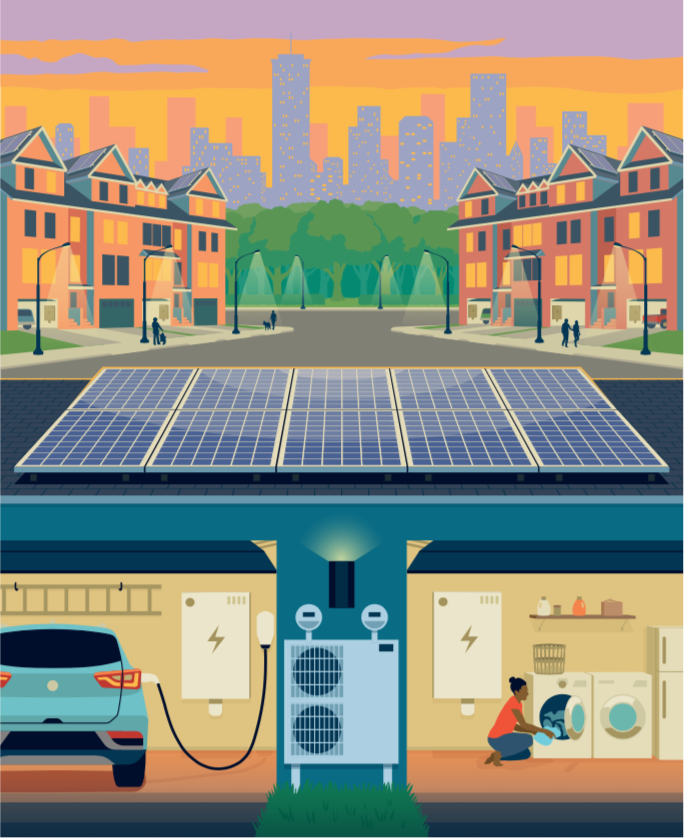Spring 2024 DERs Archive

Distributed energy resources (DERs) are controllable electrical devices that plug in at the edge of the power grid, typically through buildings. DERs — such as electric vehicles, heating and cooling equipment, energy storage systems, and rooftop solar photovoltaics — will play an increasingly important role in future energy systems that decarbonize, digitalize, and decentralize their operations. In this class, students will learn to model a variety of DERs, optimize DER designs, and control DERs to reduce costs, pollution, and impacts on the power grid. This class will involve a mix of coding and mathematical analysis. Students will do semester projects on current DER research and development topics.
Flyer
Syllabus
Discord
Lecture slides
- Introduction
- Linear ordinary differential equations
- Linear dynamical systems
- Batteries and electric vehicles
- Buildings
- Heating, ventilation, and air conditioning
- Thermal storage and water heaters
- Solar energy
- Modeling summary
- Optimization overview
- Convex sets and functions
- Solving convex optimization problems
- Objectives in DER optimization
- Battery optimization examples
Lecture videos
- Introduction
- Linear ordinary differential equations
- Linear dynamical systems
- Batteries and electric vehicles
- Project ideas from Ben Larralde at Flip
- Buildings part 1
- Buildings part 2
- Heating, ventilation, and air conditioning
- Thermal storage and water heaters
- Solar energy
- Modeling summary
- Optimization overview
- Convex sets and functions
- Solving convex optimization problems
- Objectives in DER optimization
- Battery optimization examples
Homework
- ODEs and dynamical systems
- Batteries and electric vehicles
- Buildings
- HVAC and thermal storage
- Solar
- Getting started with CVX
Code
- Simple climate model (linearization, time discretization)
- Electric vehicles (dynamics, charging policies)
- Buildings (dynamics, heating/cooling policies)
- Water heaters (dynamics, charging policies)
- Solar (solar angles, surface irradiance, net metering)